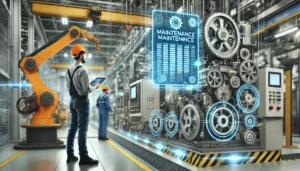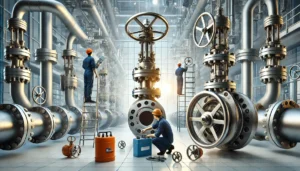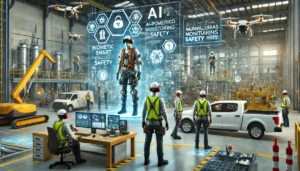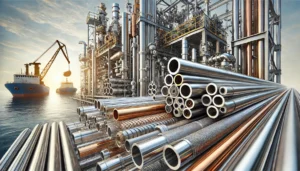The changes in lifting equipment have improved efficiency and safety in different industries. Building and construction, logistics, manufacturing, and managing warehouses depend on the broad spectrum of lifting operations. So, these sectors incorporate design, material, and technology innovations to make lifting tasks quicker, safer, and more reliable. The improvement increases load-bearing capacity, safety during operations, cost efficiency, environmental benefits, and more.
1. Advanced Materials and Design
Improvement in lifting devices is largely driven by the incorporation of new materials. A few applications have substituted traditional materials such as steel with high-strength alloys, carbon fiber, and composites. These materials are lighter and equally, as strong, or not stronger, as their predecessors. Lifting Devices such as cranes and hoists can pick up extra heavy loads without compromising stability and structure. Furthermore, advanced materials are more resistant to wear and corrosion, thus making maintenance less of a hassle. They improve the equipment’s service life.
Innovative improvements have also been made to design, such as manufacturers developing lifting equipment with greater strength and size. Such designs lessen the space the equipment occupies while increasing its load capacity, and are therefore ideal for confined areas or places where heavy lifting is needed, but floor space is at a premium.
2. Automation and Robotics
Automation and robotics in lifting equipment has improved the accuracy, work efficiency, and safety of lifting and other related tasks. Automated systems can carry out lifting activities with great accuracy and repetition, and drastically minimize the margin of error. For example, today’s automated cranes and robotic arms no longer require much human intervention for them to be able to carry out repetitive lifting activities within buildings. This replacement of skilled operators with machines increases productivity and greatly decreases the chances of accidents resulting from fatigue and negligence.
Lifting applications have also welcomed Collaborative Robots (Cobots), which are designed to cooperate with human operators. These robots can bonus by lifting and moving heavy loads while protecting the operator’s physical well-being. The modern robots have advanced sensors and control systems designed to identify human limbs and movements, allowing them to adjust accordingly to minimize collisions. This robotic finesse, together with human control, achieves peace-of-mind while increasing workplace health and safety.
3. Automated Control Systems
Intelligent control systems are increasingly being incorporated into modern lifting equipment for better functionality. These systems are capable of monitoring real-time data and adjusting control operations accordingly which enhances the safety as well as the efficiency of lifting operations through real time feedback on essential parameters like load weight, lift speed, and pressure conditions. For instance, load cells and other sensors enable the equipment to automatically determine whether it is lifting within safe limits. In the case where the electric load exceeds the prescribed limit, the system can decide to either automatically adjust the speed of lifting or turn on warning signals over an accident.
Intelligent control systems can also perform predictive maintenance these days. Resisting on the foundation of nonstop performance monitoring and data analysis, these control systems are able to forecast the likely failure of a machine component and enable “repair before break down” strategy. Through this feature, intelligent control systems are predicted to reduce downtimes, maximize equipment life, and improve operational efficiency.
4. Enhanced Safety Features
Advanced Technology Inc. It has made significant strides in ensuring a safe working environment and the correct functionality of lifting equipment and training tools through the application of advancement technology. For instance, control systems to maintain the stability of loads during lifts to minimize the chances of accidents. Such systems consist of sensors that monitor the position and movements of the load. These sensors adjust the lift mechanism to ensure stability at all times.
Moreover, the possibility of overloading is another high level safety best practice. Modern lifting tools now come fully equipped with automatic overload systems which do not allow the rises that exceed the safe working load limit. This protects the piece of equipment from damage, in addition to the safety of workers within the region. Over and above these, modern systems in lifting devices include the ability to stop an engine in case of emergency, fail-proof devices, and the automatic centering of the load.
5. Autonomous and Remote-Controlled Equipment
Every innovation’s success relies on minimizing human interference at every possibility. IoT technology integrated into lifting equipment made superlative safety standards and efficiency rates obtainable. The systems are designed to do strenuous tasks with no human interference. Self-Driving Forklifts and cranes can autonomously move around warehouses or construction sites to pick and put down loads. Operators are, therefore, absent on location to minimize injuries and other risks like human error.
Moreover, ergonomic lift manipulators that handle remote systems have seen increased use across multiple sectors for good reason. For the sake of safety, remote control systems allow operators to sit at a distance while manipulating equipment. Such systems are monumentally effective when placed in construction sites or any other environment where a person is prone to being shielded from such dangerous conditions.
6. Energy Efficiency and Sustainability
Electric and hybrid cranes, forklifts, and hoists are increasingly commonplace in lifting operations and becoming further incorporated in the designs of lifting equipment manufactured. Electric hoists feature energy-efficient technologies in caring for the environment and lowering harmful carbon emissions. Incorporating these modifications into lifting equipment drastically reduces operational expenses while minimizing the negative environmental impacts and emission fumes.
Another green innovation that contributes to sustainability is battery-powered lifting devices. These models of diesel powered equipment are much more sustainable and effective than their traditional counterparts. Greener battery-powered lifting equipment is now a feasible substitute for many industrial processes, particularly those constructed in places such as indoor environments where fumes are a problem. Additionally, these battery powered systems charge much faster and last for far longer than typical models.
7. Integration with Building Management Systems
The integration of the lifting apparatuses into building management systems (BMS) has optimized workflows in large scale facilities and multi-storey buildings. Connecting the lifting apparatuses with the BMS allows the operators to control energy utilization, monitor the equipment’s working levels, and consolidate it with the other equipment of the system. In particular, high rise buildings, elevators are now designed to operate in conjunction with BMS, meaning they do not need to be controlled manually; instead, they work automatically depending on the number of users or busy times. This significantly reduces waiting time and enhances the overall client satisfaction while ensuring the machinery functions at the highest levels of efficiency.
Conclusion
Both the modern technology developments and the newly incorporated materials science innovations have changed the face of lifting machinery allowing its modern iterations to be safer and more efficient in the required tasks in all sectors of the economy. New materials, new systems, new intelligent controls and new self-efficient designs are advancing business productivity, operational risk, and creating lower limits for safety in the workspace. There is no doubt that a new age in lifting technology is around the corner. With emerging construction work demands and limitations, novel approaches are expected to be far more effective and safer than the current standards. These advances serve as a foundation for more reliable and environmentally friendly practices. Advancements in industrial engineering not only improve business efficiency, but also foster a safer and more economically sustainable industrial society.










